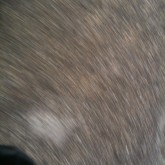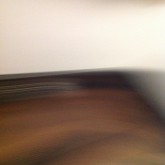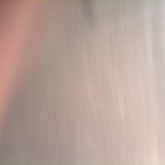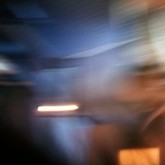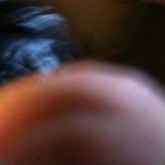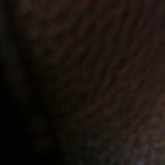Time is an artificial ruler
- by admin
- 0
时间是一把人造的尺子
Time is an artificial ruler
Die Zeit ist ein künstliches Lineal
一个全自动摄影自行机器人
:a totally automat photograph machine.
A photo, while being seen in the record, always refers to things that have never been seen. It isolates, preserves, and presents an instant of continuation.
– John Berg “Understanding a Photo”
“Watching” is the key word of Berg’s theory. Understanding a photo or a painting begins with a different way of viewing. In order to pay tribute to John Berg’s “Understanding a Photograph”, I wrote a parrot and wrote an article “Understanding a Selfie”, published in “Shanghai Culture”, No. 1 of 2019, following Berg’s The speech went a step forward. Photography has changed the way we watch the world, and self-timer has changed the way we watch ourselves. Significant changes have taken place from the initial photography to today’s selfies. In Benjamin, Sontag, John Berg, and the Frenchman Uber Davis’s series of lectures on photography, there is a basic premise that once the filming is completed, the printed pictures are fixed, regardless of the photographer. It is still difficult for the viewer to be on the top. The self-timer changes this, it eliminates the binding of traditional negatives and transforms the image with tools, such as retouching. The final image is composed of two parts, one is the original image, and the other is the image change. Self-timer not only changes the way the story is told, but also changes the story itself.
Does the change in form affect the meaning of photography? In 1968, John Berg had a point: “The true content of a photo is invisible. It can be played with drama. The meaning here is explained by time, not form.” In Berg’s opinion, Only when photography is seen as an imitation of painting, does it mean that there is a need to talk about the composition of photography, otherwise it will miss the key to understanding a photo. Is photography an imitation of painting? Of course not, so talking about the composition of the photo has become a fish, not helping to really understand a photo. The question followed, what exactly is the meaning of photography for photos? Berg’s answer is time, explained by time. He has a basic point of view, “Photo captures the flow of time, and the captured event becomes a once-existing one,” the photo is a moment of being fixed, this moment comes from continuous time, “If this event is a public event, Then continuity is history; if it is private, continuity is a life story.” Meaning does not arise at a certain moment, meaning can only be found in certain interconnected existences. To understand a photo, you must not only see this moment, but also have the ability to read the time of continuity that this moment hides.
When a photographer takes a picture, we believe that he thought in his mind, “I have made a decision, what I see is worthy of being recorded.” The recorded moment, and the moment did not show They should all be remembered when we watch a photo. Whether we use a painting to enter history or use a private photo to enter a life story, we will face each other as part of a continuous time. Understanding is understood to understand this continuity, especially those that are not presented. Unknown is unknown, even if it belongs to a certain continuous time, it does not mean that it can be taken for granted. The understanding is to see this moment and to maintain the necessary awe of the rest of the time that you have not seen. This concept made me start to be cautious in the face of other texts. This moment captures a definition of short stories by British critic VS Pritchett – Something glimpsed from the corner of the eye, in Passing. (The corner of the eye is a glimpse) – there is some kind of similar direction. What photographers and novelists do is to try to illuminate this moment. This is what the viewers and readers can do. First, they have the ability to see The illuminated part, in turn, restores those isolated moments into a continuous time and ultimately gives it a certain historical significance. This is where writing is greater than photography or even painting, rather than being driven away, rebellious, and tempted by images to become unrecognizable and self-satisfied.
At the moment when photography replicates time, “story, poetry, music belong to time, and perform in time.” That painting is to complete “traveling time” with “the power of moments in the eternal language”. What is eternal? By the 19th century, human cosmology imagined time as being surrounded by eternity. “Eternity constitutes a kingdom of refuge and petition. It is the direction of prayer. It is the destination of the dead. Through rituals, stories and ethics, it is intimate. Invisibly linked to the current world of time.” Berg mentioned that after the 19th century, the Darwinist view of time became more and more dominant, the “one moment” of time became shorter and shorter, and impressionism was to be expressed for an hour. Expressionism emphasizes a moment of subjective feeling, and futurism must abolish stillness and eternity. Instantly becomes the only paradigm of time, pragmatism and consumerism vulgarize time, and pop art will instantly become written and instant. If you don’t recognize the coexistence of instant and eternity, the art of painting will be inactive. The same is true of literature. After Modiano turned time into a lot of fragmentation, how to deal with the moment became more and more difficult. “Instant” is the status quo, and it is also a problem. In terms of knowing eternal and long time, either abolish time or continue with the existing concept of time. Literature and art are art that feels time, time and imagination.
The similarity between literature and art lies in the fact that when a writer, photographer or painter succeeds in capturing this moment, he must realize that there are still things that are not seen outside of his vision. They also need to be integrated. Considering it, even if you don’t have the opportunity to show up on your face, you can’t be treated casually. When the pioneer novels focused on “how to tell” a story, based on a setting that everyone can accept, there is still a story, and the story is complete and continuous, and its integrity does not depend on the method of telling. But no matter what you say, it does not detract from the self-sufficiency of the story itself.
A photo, a painting points to an instant; a moment points to a continuous time; this time points to an unknown thing, which will eventually point to the viewer, point to the way of viewing, and finally point to something eternal. . Don’t ridicule and deconstruct such things easily, as Berg reminds. “Satire is only possible if moral standards still exist, but now these moral standards have been exhausted.” What we are welcoming will be complete nothingness. Even the moment became meaningless.
一张照片,在记录所见的同时,却总是天性使然地指涉着所未见的事物。它孤立、保存和呈现一个从连续体中拿来的瞬间。
——约翰·伯格《理解一张照片》
“观看”是伯格理论的关键词,理解一张照片或者一幅画,都始于一种有所不同的观看方法。为了致敬约翰·伯格的《理解一张照片》(Understanding a Photograph),我鹦鹉学舌,写过一篇《理解一张自拍》,刊于《上海文化》2019年第1期,顺着伯格的言论往前走了一步。摄影改变了我们观看世界的方法,自拍改变了我们观看自己的方式。从最初的摄影到今日的自拍,形式上发生了显著的变化。在本雅明、桑塔格、约翰·伯格和法国人于贝尔·达弥施关于摄影的系列论述中,有一个基本前提,拍摄一旦完成,洗印出来的图片都是固定的,无论是拍摄者还是观看者都难以在上面动手脚。自拍改变了这一点,它取消了传统底片的约束性,借助工具对成像进行改造,比如修图。最终的成像由两部分组成,一是原始图像,二是对图像的改动。自拍不仅改变了故事的讲述方式,还改变了故事本身。
形式的变化是否会影响摄影的意义?约翰·伯格在1968年就有一个观点:“一张照片真正的内容是不可见的,它可用戏剧来推演,在这里意义要用时间来解释,而非形式。”在伯格看来,只有摄影被看作对绘画的模仿时,才意味着有谈论摄影构图的必要性,否则就错失了理解一张照片的钥匙。摄影是对绘画的模仿么?当然不是,因此谈论照片的构图便成了缘木求鱼,无助于真的理解一张照片。问题随之而来,究竟是什么给照片以摄影的意义?伯格的答案是时间,通过时间来解释。他有一个基本观点,“照片捕捉流动的时间,被拍下来的事件成为曾经的存在,”照片是一个被固定住的瞬间,这个瞬间来自连续性的时间,“如果这事件是一个公共事件,那么连续性就是历史;如果它是私人的,那么连续性就是一个生命故事。”意义不产生于某一瞬间,意义只能在某些相互连接的存在被发现。理解一张照片,不仅要看见这一瞬间,还要有能力从中阅读出这一瞬间所藏身的连续性的时间。
当一个摄影师拍下一张图,我们相信他脑子里想过,“我已作出决定,我之所见是值得被记录下来的。”那被记录的一瞬间,以及这一瞬间没能呈现的,都应该成为我们观看一张照片所谨记的。无论我们借助一张画进入历史,还是借助一张私人照片进入生命故事,我们将面对面的是连续性时间的一部分。Understanding译成理解,就是要理解这连续性,尤其是那些未被呈现的时间。未知的就是未知的,即便是同属于某一连续的时间,依然不等于可以被视为理所当然。理解就是看见这一瞬间,并就未能看见的其余时间保持必要的敬畏。这一观念使得我在面对其他文本时,开始变得谨慎,这一瞬间的捕捉与英国评论家V.S.普里切特关于短篇小说的一则定义——Something glimpsed from the corner of the eye,in passing.(眼角顺带一瞥)——有着某种相通的指向,摄影家和小说家所做的,就是努力照亮这一瞬间(这一瞥),观看者和读者能做的,首先就是有能力看见被照亮的部分,继而将那些孤立的瞬间,恢复成连续性的时间,并最终赋予它确定的历史意义。这是写作大于摄影甚至绘画的地方,而不是被影像驱赶、策反、引诱而变得面目全非、自怨自艾。
摄影复制时间的一瞬间,“故事、诗歌、音乐属于时间,而且在时间之中表演。”那绘画就是以“永恒的语言述说瞬间的力量”完成了“穿越时间”。永恒是什么?到19世纪,人类的宇宙论将时间想象成被永恒围绕,“永恒构成一个庇护和祈求的王国。它是祈祷之所向。它是亡人的归宿。通过仪式、故事和伦理,它亲密而又无形地与时间的现时世界相联系。”伯格提到,19世纪后,达尔文主义的时间观越来越占据统治地位,时间的“一瞬间”越来越短暂,印象主义要表现一个小时,表现主义强调一个主观感觉的瞬间,未来主义要废除静止和永恒。瞬间成了时间的唯一范式,实用主义和消费主义将时间庸俗化,波普艺术将瞬间变成所写、即时。如果不认可瞬间和永恒的共存,绘画艺术将碌碌无为。文学也是一样,在莫迪亚诺将时间变成众多的碎片化之后,如何处理瞬间变得越来越艰难。“瞬间”是现状,也是尴尬的问题。在认识永恒和漫长的时间方面,要么废除时间,要么延着现有的时间观继续下去。文学和艺术都是感受时间、处理时间和想象时间的艺术。
文学和艺术的相通之处,在于当一个作家、摄影师或者画家,在成功地捕捉到了这一瞬间时,必须意识到在他的所见之外还存在未见的事物,它们同样需要被整体地加以考虑,即便没有上台露脸的机会,也不能被随意对待。当年先锋小说讲究“怎么讲”一个故事时,基于一个大家都能接受的设定,就是依然有一个故事,且这个故事是完整的,是连续性的,它的完整不取决于讲述的方法,而是无论怎么讲都无损于故事本身的自足性。
一张照片、一幅画指向一瞬间;一瞬间指向一段连续性的时间;这段时间又指向未知的事物,这未知的最终会指向观看者,指向观看之道,最终指向某类永恒之物。别轻易嘲笑和解构这类事物,正如伯格提醒的,“讽刺只有道德准则还存在时才是可能的,而如今这些道德准则已经消耗殆尽。”那我们所迎来的将是彻底的虚无,连那一瞬间都变得无意义。
时间是一把人造的尺子 Time is an artificial ruler Die Zeit ist ein künstliches Lineal 一个全自动摄影自行机器人 :a totally automat photograph machine. A photo, while being seen in the record, always refers to things that have never been seen. It isolates, preserves, and presents an instant of continuation. – John Berg “Understanding a Photo” “Watching” is the key word…
时间是一把人造的尺子 Time is an artificial ruler Die Zeit ist ein künstliches Lineal 一个全自动摄影自行机器人 :a totally automat photograph machine. A photo, while being seen in the record, always refers to things that have never been seen. It isolates, preserves, and presents an instant of continuation. – John Berg “Understanding a Photo” “Watching” is the key word…

